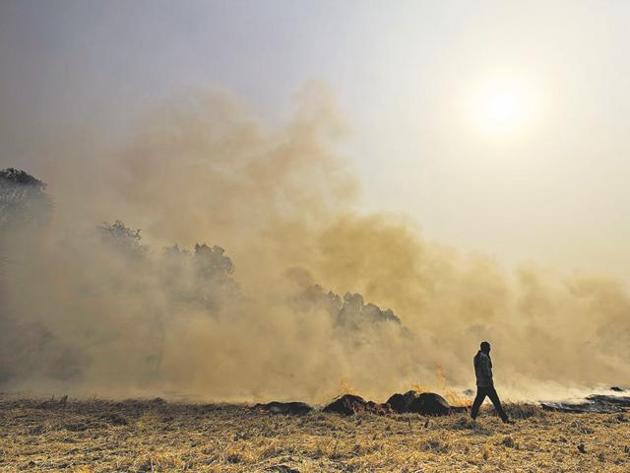Spectre of crop burning rises again, air quality under threat
NASA which remotely monitors crop burning across north India has started capturing instances of crop fires in Punjab and Haryana.
Paddy stubble burning, which triggers episodes of smog across Delhi-NCR during winters, is slowly picking up across parts of Haryana and Punjab, sparking concern among states in the region.

The Pollution Control Board of Haryana has confirmed two reports of stubble burning while NASA’s web fire mapper is showing a few red dots scattered across the National Capital Region, including in Punjab.
Haryana started satellite monitoring of the region on September 22 and since then authorities have found two instances where farmers set paddy straw afire, the Environment Pollution (Prevention and Control) Authority (EPCA) has been informed.
“Both the confirmed cases were in Panipat. One more case was reported from Fatehabad but officials are yet to confirm whether it was a case of stubble burning,” a Haryana pollution control board official said.
However, the EPCA, which is a Supreme Court-appointed body, is hopeful that the vigil mounted by the state authorities and awareness campaigns would bear fruit, preventing a repeat of the last few years, when smoke from stubble burning severely affected Delhi’s air quality.
This time the Delhi government is especially concerned about farm residue burning as the city will host a few matches of the U-17 FIFA world cup in October and any major episode of smog will hit the country’s image.
The issue had turned political last year with Delhi blaming Haryana and Punjab for failing to provide incentives to farmers to desist from burning paddy straw, which it claimed aggravated air pollution in the city, especially in the first week of November.
According to EPCA chairman Bhure Lal, around 35 million tonnes of paddy straw are burnt in Haryana and Punjab before the onset of winter season, to clear the fields to sow Rabi crop.
Haryana pollution board officials said they are keeping the local administration as well as the EPCA updated on the situation. Punjab will start satellite monitoring on October 1.
A Punjab official said NASA’s red dots may not actually convey the right picture as it detects all forms of open burning. Stubble burning reaches its peak around October 20.
Apart from polluting the air, the practice of stubble burning robs soil of its nutrients as well.
According to agro experts, burning one tonne of straw accounts for the loss of 5.5 kg nitrogen, 2.3 kg phosphorus, 25 kg potassium and 1.2 kg sulphur.
The Comprehensive Action Plan for air pollution, drafted by the EPCA which has been submitted to the Supreme Court, has pitched for a strict enforcement of ban on burning of agriculture waste and crop residues in Punjab and Haryana.
It has batted for increased subsidy for purchase of equipment that eliminates the need for burning stubble and straw and recycling and reuse of this waste.



